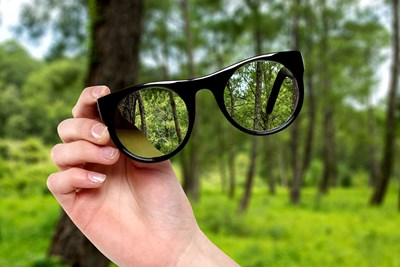Lazy eye, or amblyopia, is a condition in which one eye seems to wander. Caused by strabismus, refractive errors, or deprivation (such as a cataract), it can result in permanent vision loss if left untreated. Here’s a look at treatments for lazy eye.
Corrective Lenses and Eye Patches
Refractive errors cause amblyopia when the difference between the two eyes is significant. In some instances, simply getting proper prescription lenses to correct the vision can in turn help correct a lazy eye. Unfortunately, it isn’t always so simple. Wearing a patch for a few hours every day forces the brain to reconnect and get used to utilizing the weaker eye again.
Bangerter Filters and Atropine
An alternative to the very obvious and embarrassing eye patch is a Bangerter filter, which acts as a sort of screen that can be attached to the non-amblyopic eye. It obscures the lens of the unproblematic eye, again forcing the brain to utilize the weaker eye. Isopto Atropine is a particular kind of eyedrop that can be used twice weekly in the stronger eye, making the visual center rely on stimuli from the weaker eye. Atropine is much more subtle than an eye patch, but can make the eye photosensitive, as well as causing potential long-term issues.
Alternative Treatments
Many teams that help improve amblyopia coordinate a series of lazy eye exercises and activities in addition to blocking the stronger eye. These methods don’t have a lot of evidence behind them, but they do have value in the fight against lazy eye. In more severe cases, it may eventually be necessary to perform surgery. This might mean adjusting intraocular muscles, fixing a cataract, or other surgical procedures.
Older Patients
It has largely been believed that there is little to be done for someone with lazy eye after about age 8. However, with new treatments and a greater understanding of amblyopia, this may no longer be true. One very effective treatment for older children and even adults is a computer program that can actually stimulate neural changes. If you or your child have lazy eye, talk to an eye doctor about what lazy eye exercises you can try and steps you can take to manage amblyopia.



